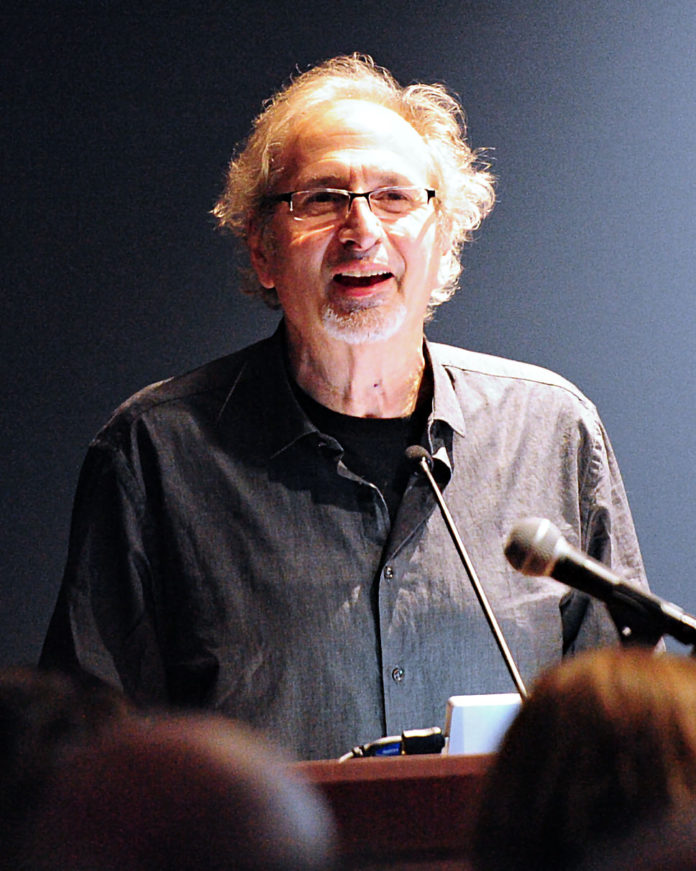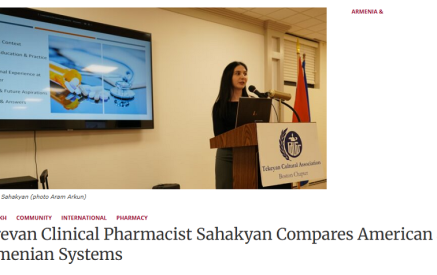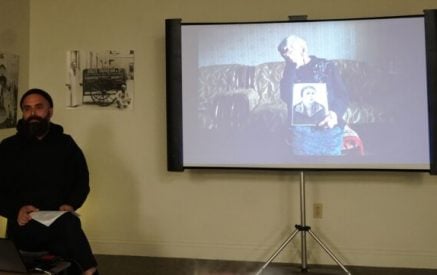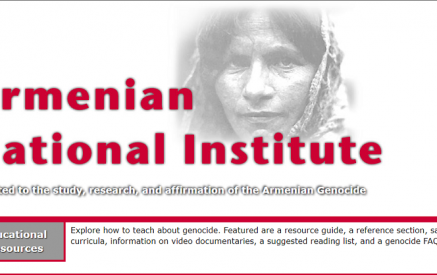On Thursday, February 27, the two discussed their new book at the National Association for Armenian Studies and Research to a packed audience.
Incidentally, the book received the 2019 Sona Aronian Book Prize for Excellence in Armenian Studies from NAASR.
Read also
Marc Mamigonian, the director of academic affairs at NAASR, in his opening comments said that it is “important to make [Ani’s history] accessible to the outside world,” and that the book was “imbuing it with a currency we will hear tonight.”
Arkun, the executive director of the Tekeyan Cultural Association of US and Canada, and assistant editor of the Armenian Mirror-Spectator, a historian by training, started off the program by giving an overview of the grandeur of Ani and the infighting and pettiness that led to its eventual demise.
Arkun said it was important to encourage scholarship in Armenian topics and delved into the significance of Ani.
“Ani has a special place among Armenians in that it is a symbol of Armenian culture. It is an almost mystical land of 1,001 churches,” he said.
Ani is tantalizingly close to the Republic of Armenia and yet out of reach. It occupied about 200 acres on the Shirak plain in the Armenian Highland.
Ani was the Armenian Bagratuni capital from 961 to 1045 AD. After the Arab invasion of Armenia, Armenians eventually fought to regain independence and took advantage of weakening Arab rule, though it did lasted 150 years.
The city, at its height, was estimated to have a population of 100,000, which was larger than many European capitals in that period.
The Byzantine Empire gradually moved eastward andå took over Van and Vaspurakan. It was able to trick King Gagik II, who was the last king of Ani, to go to Constantinople, where he was forced to renounce his throne.
While Ani lost its independence to the Byzantine Empire, it still functioned as a center of trade on the Silk Road.
The city was eventually deserted by the early 18th century, after being sacked multiple times, sold and abandoned.
From the 1890s to 1917, Prof. Nicholas (Nikolai) Marr, the Russian archeologist, and his students, including Hovsep Orbeli, excavated Ani’s ruins. In part, thanks to their efforts, Ani was declared a UNESCO world heritage site in 2016.
In the 19th century, Ani regained a cache among world travelers as well as Armenians, who regarded the ruins interesting for different reasons. For many Europeans, the ruins were exotic and harkened back to a mysterious history; for Armenians, the half-collapsed churches and defensive walls recalled a mighty and advanced heritage.
Catholicos of All Armenians Matteos II Izmirlian had gone to St. Petersburg to meet with the Tsar and requested permission to visit Ani during his voyage from St. Petersburg to Echmiadzin.
At the time of the visit of Vartabed Balakian with the entourage of Catholicos Matteos II in 1909, the area was under Russian rule, as Turkey had recently lost the Russo-Turkish war in 1878.
Arkun showed some photos taken by the entourage then and current photos of Ani, as clearly some of the ruins have been deliberately destroyed further and recent signs obscuring the Armenian origin of the local architecture.
Arkun gave a detailed presentation of the city as it had been, perched between two rivers, with a fortress and walls defending it.
In fact, the pictures were so impressive that several in the audience gasped.
There were several major cathedrals, including one by the architect Drtad, who later on went to Constantinople (Istanbul) to repair Hagia Sophia Cathedral.
“It was very refined for this period of time,” Arkun said, and could possibly have influenced the medieval architecture of Europe.
He added, “Ani had become an urban center for trade,” as it was on the Silk Road.
The task awaiting Arkun and Peter Balakian was toning down the text of the manuscript of Bishop Balakian, who had written with the purpose of pulling at the heartstrings of Armenian readers rather than provide a disinterested narrative.
The visit had taken place shortly after the Adana massacres of 1909, the authors said. The Armenian community was uneasy in the aftermath, but very fragmented in their views. The young vartabed hoped that his book would encourage unity among them if they were able to reflect on their glorious heritage.
Balakian in his comments connected his ancestor’s visit with his own almost a century later. He also compared some of the photos from the same sites, which had deteriorated tremendously not only because of natural causes but because it was clear that the government had tried to destroy some of the buildings.
He said according to the manuscript of his uncle, the latter had been overjoyed to see Ani. He quoted the bishop from the book’s introduction, “I was overjoyed at this opportunity to see Ani, I had a thirst to see those eternal monuments of the past glory of our forefathers. I wanted to kiss that holy soil.”
He thought about it as “Armenia’s Florence.”
Balakian also noted that for Raphael Lemkin, the Jewish-Polish attorney who created the word genocide, the destruction of the culture was a part of genocide.
He noted that it was ironic that the approximately 30,000 Armenians who remain in Turkey today are cut off from Armenian sites in Turkey. While the ruins of the city sit across the border from Armenia, crossing that border is not easy.
Tying it to the current problems in Turkey, Balakian said that Osman Kavala, the Turkish businessman and philanthropist, who has been jailed for several years on a variety of unsubstantiated charges, was one of the people who in 2016 met at the United Nations with the Turkish Cultural Representative, along with Balakian, Prof. Christina Maranci, Prof. Rachel Goshgarian.
A reception followed.
The Ruins of Ani is available on Amazon.
Main photo: Prof. Peter Balakian (Jirair Hovsepian Photo)





























































